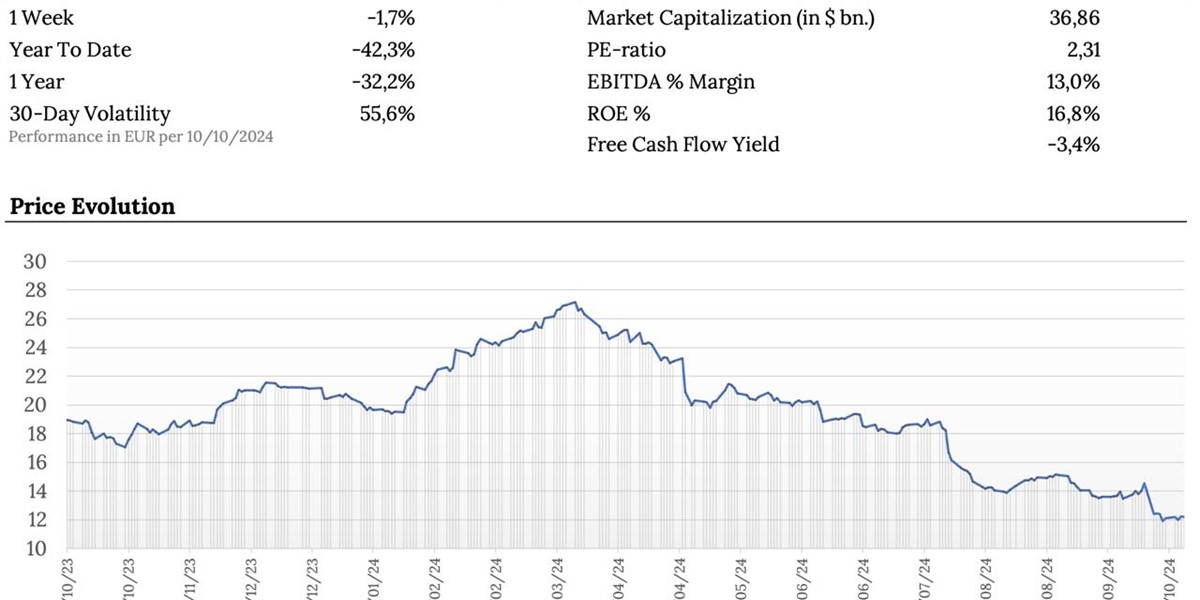Philippe Piessens is Senior Wealth Manager at Econopolis Wealth Management. Philippe has extensive experience in financial services, with a focus on equities. He started his career in 2001 at Lehman Brothers in London, and subsequently worked at HSBC and Kepler Cheuvreux. In addition, Philippe is active in art, as a collector and advisor, and in property, via his family business. Philippe received a BSc in International Relations at the London School of Economics.
Fiery Flash: Recent Developments at Stellantis

Stellantis, one of the world's top five automakers, was formed in January 2021 from the merger of PSA Peugeot Citroen and Fiat Chrysler Automobiles. While the company initially emerged as a star performer post-pandemic—its stock more than doubling from 2022 lows—recent developments have taken a toll. After peaking at just over €27 in March 2024, the stock has sharply declined, now hovering around €12 following a profit warning just weeks ago. What went wrong?
In the immediate aftermath of the pandemic, the European automotive industry, long struggling with excessive competition and weak pricing power, seemed to be on a recovery path. During the lockdowns, production cuts led to a surge in demand from cash-flush consumers benefiting from stimulus packages. This created a favorable pricing environment, improving margins and significantly boosting free cash flow. Once shunned by investors, auto stocks—trading at depressed multiples—began to attract attention. Stellantis, under the leadership of "turnaround king" Carlos Tavares, appeared to be leading the pack. The company capitalized on platform sharing across its brands, with Jeep raising prices above competitors, while also returning cash to shareholders.
But then the tide turned. The root cause lies in the sector's shifting dynamics. By 2023, volume growth began to slow, turning negative in 2024, transforming a shortage of cars into a surplus. As electric vehicle (EV) adoption accelerated, European automakers like Stellantis found themselves losing ground to more agile Chinese competitors. When Tesla initiated a series of price cuts to fend off competition, it became clear that European OEMs were ill-prepared for the energy transition.
As these challenges mounted, Stellantis revealed further internal issues. The company’s model lineup failed to impress increasingly price-sensitive consumers, while a September profit warning highlighted problems with logistics, software, and a cyclical downturn in the commercial vehicle segment.
The once virtuous cycle of upgrades and multiple expansion seen in 2022-23 has now completely reversed. The shareholder returns that bolstered performance through 2023 and early 2024 are a fading memory. Adding to the sector’s complexity are rising geopolitical tensions, regulatory volatility, potential public interventions, and heightened risks from labor unrest. The pressure is now squarely on CEO Tavares and Chairman John Elkann to restore investor confidence.
